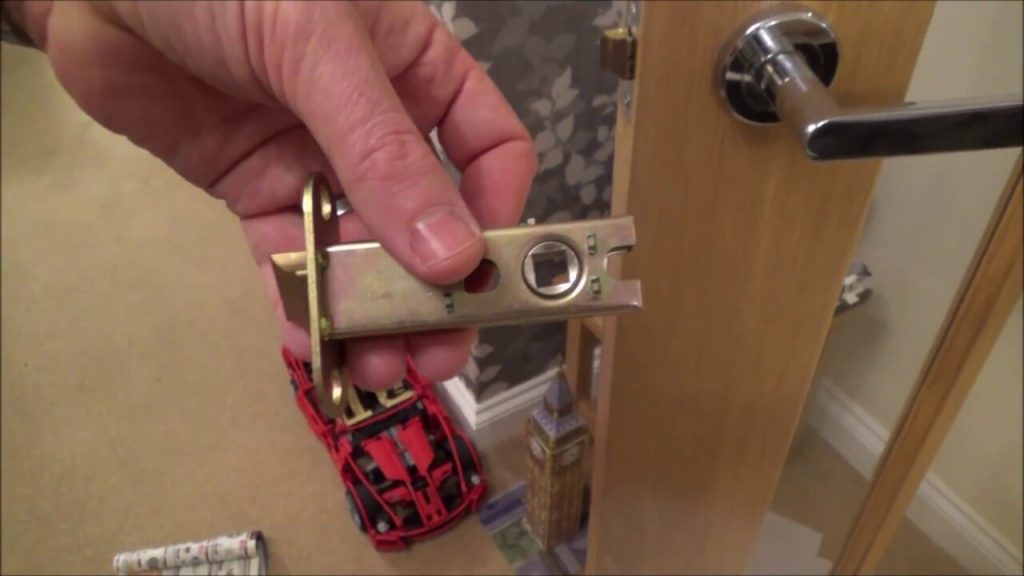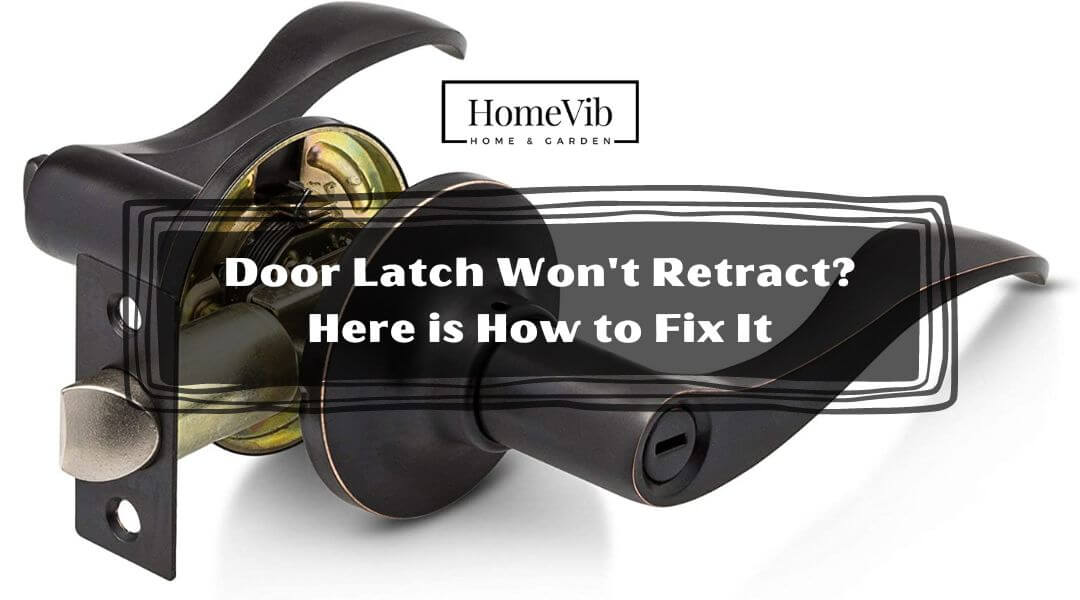The door latch is one of the key parts of your door that makes it safe. And sometimes, the latch won’t retract. This is a common issue that many people experience.
I’ve experienced this as well, and it was a bummer. If you have experienced your door latch not retracting, then you do this.
You can be proactive and whack the latch with a hammer until it retracts. Or, you can be all handy and adjust the spindle.
You can try these steps and see if they work. You can check out the other steps below if they don’t work.
What are the Parts of a Door Latch?

Lock body or cylinder
The cylinder or lock body is where you insert your key. The cylinder has spring-loaded pins inside. These pins get pushed around when you lock and unlock your door.
Each pin will move according to a specific key. If your key is wrong, then the pins will not budge. But if you have the right key, these pins will move without problems.
Bolt or latch
This is a piece of metal that holds the door close. It extends from your door to your door frame.
Box
This is a small square hole. It holds the bolt or latches in place when it is locked.
Strike plate
This is the metal plate attached to your door’s frame. The strike plate guides the bolt or latches into the box. It also helps secure and reinforces the bolt or latch when locked.
Spindle
This is the metal rod that connects your door knobs. Some door knobs have two spindles, while most only have one.
Reasons Why Your Door Latch Won’t Retract
Because you use your door every single day. You may experience your door latch not retracting. There are a couple of reasons why this issue happens.
Some of them include the following:
There is a problem with the internal mechanism.
Sometimes, when there is a problem with the internal mechanism of the latch, it will not retract. You need to check if there is any problem with the pins. Or it may be the spindle. For example, I had an issue before where the spindle had a problem. It caused the door latch to get completely stuck in place.
Something is blocking the latch.
Sometimes dust, rust, and other stuff get stuck inside. This causes the door latch not to move or retract. For example, there may be rusting inside the box or the latch itself. Rust can increase friction which makes it a headache to move the latch.
The strike plate is not properly in place.
There may also be instances where the source of the issue is the strike plate. I’ve noticed this before while trying to open my closed door. But when the door is already open, there is no issue. In this case, the strike plate was misaligned.
One cause that I found out is improper installation. Another possible reason is the expansion of your wooden door frame. Sometimes moisture that is absorbed by the wood causes it to expand. This can affect the strike plate.
The plunger is stuck.
If your latch has a plunger, then it may be the cause of the issue. Sometimes the plunger gets stuck. When it does, it also causes your latch to be stuck in place.
How to Fix a Door Latch That Won’t Retract?
As mentioned in the previous section, there are a couple of reasons for this:
There is a problem with the internal mechanism.
You can try using a hammer if the problem is the internal mechanism. You can hit the latch a couple of times until it retracts. However, take note that this is only a temporary solution. Personally, I would disassemble the latch and check the specific issue. That is because you can never be sure what is really wrong inside.
Something is blocking the latch.
If something is blocking the latch, then you need to clean it. Disassemble your door latch and remove whatever is blocking the inside. If the reason is rust, you need to use a rust remover like Evapo-Rust.
The strike plate is not properly in place.
If the strike plate is misaligned, you can use a hammer. You can hit it until it moves. But if the misalignment is wood expansion, you need a redo. You need to redo either the finish of your door or how the latch was installed.
The plunger is stuck.
If the stuck plunger is the reason, you need to lubricate it. Before you do that, disassemble the door latch first. Then, lubricate the plunger and all other parts affected.
If none of the steps above work, it may be time for a replacement. You can also do this, especially if your door latch is old.
Sometimes it is better to replace an old door latch. You can even amp up the aesthetic with a lever type.
F.A.Q.
How Do You Open a Door When the Latch Is Broken?
If the door latch is broken, you can force it open. You can use a hammer to hit it until it budges. You can also try disassembling it to check if the internal mechanism has issues.
Personally, I would prefer disassembling it since that is less barbaric. It is also more effective.
Are All Door Latches the Same?
Not all door latches are the same. Door latches can vary based on style. These include the following:
Spring Bolt or Latch
This is a latch where a clip holds the bolt in place. The clip has a spring that compresses when you unlock the bolt. It then snaps in place to lock the bolt when released. Most spring bolt latches can lock on their own.
Deadbolt or Deadlatch
Unlike a spring bolt or latch, the deadbolt does not have a clip. It usually uses a key to unlock or lock. There is typically a knob on the other side of the door. Many people prefer deadlatches because they are more secure.
For those who want to make their deadlatches more secure, they go for the plunger. The deadbolt or deadlatch plunger is smaller. But it is less likely to get picked to open.
Electronic bolts
Some door latches have added electronic parts. These parts can be controlled using a remote.



![Berlin Modisch Entry Lever Door Handle and Single Cylinder Deadbolt Lock and Key Sleek Round Locking Lever Handle Set [Front Door or Office] Right & Left Sided Doors Heavy Duty – Iron Black Finish Berlin Modisch Entry Lever Door Handle and Single Cylinder Deadbolt Lock and Key Sleek Round Locking Lever Handle Set [Front Door or Office] Right & Left Sided Doors Heavy Duty – Iron Black Finish](https://m.media-amazon.com/images/I/41zJx-Md9aL._SL160_.jpg)







